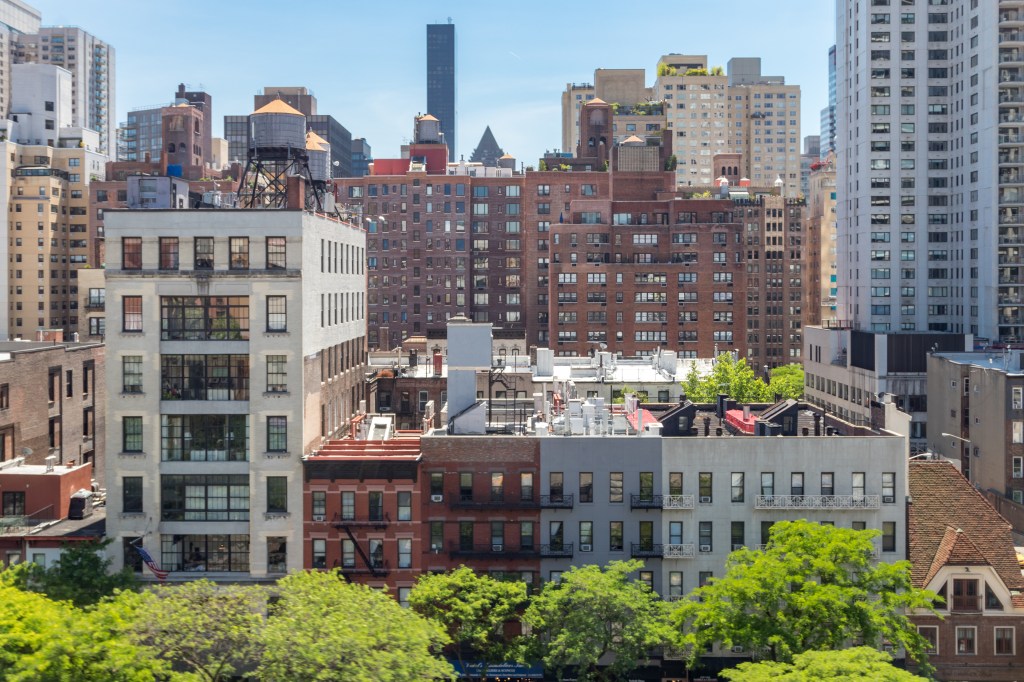Every New Yorker — from a renter in Crown Heights to a homeowner in Cambria Heights — knows that the rent (or mortgage) is too damn high.
Despite a post-COVID overall population recovery, the unabated, head-spinning rise in housing costs is pushing — and pricing — out working New Yorkers, on whose backs our economy has been built for centuries. Since 2000, we’ve lost more than 200,000 Black residents, and today, families with children across races are leaving NYC at twice the rate of others. Simply put, our future as the world’s most diverse and dynamic city is in great peril.
The status quo clearly isn’t working. Despite serious efforts in recent years — including Council Speaker Adrienne Adams’ remarkable leadership in passing the City of Yes zoning reform — we have an unbelievable 1.4% rental vacancy rate (the lowest since 1968) and half of renters and homeowners can’t afford where they live.
Our affordability crisis is a house on fire and there’s no fire door in sight. 88% of New Yorkers feel the city is unaffordable, and 65% of New Yorkers say the cost of housing is their top concern. Propelled to the polls by increasingly threadbare wallets, voters just sent a resounding message in June that dousing this blaze must be our Number One priority.
This November, we have a unique and unprecedented opportunity to take matters into our own hands. New Yorkers have the chance to directly vote “yes” on four ballot measures that will finally equip us with the long-overdue and necessary tools to fix our broken housing system.
New York City’s current process for building housing is excessively complicated, slowing down or blocking new housing altogether. In the past decade, housing construction has lagged behind major U.S. cities.
These days, the average time it takes to get new housing built in NYC is nearly 900 days — compared to 220 in Boston or 400 in L.A. New York’s housing production has dropped 75% over the past century — and in some communities, not a single project has been approved in the past decade. In the past 10 years, just 12 Community Board districts built more housing than the other 47 combined.
When it takes $4 million and four years to go from idea to shovel in the ground, many projects are never even proposed — making it impossible to quantify how many tens of thousands of homes our city has truly blocked from construction.
But these impacts haven’t been felt equally: Black and Latino families in New York are more than twice as likely to report poor housing conditions than their white neighbors, and Black and Latino New Yorkers make up 90% of families in our shelter system. Stark disparities also exist in terms of home ownership, with 42% of white residents owning their homes, compared to just 27% of Black residents and just 17% of Latino residents.
As an elected official, it’s my job to be part of the solution — which is why I’m voting Yes on Proposals 2 through 5.
Proposals 2 and 3 will fast-track the process for affordable developments and for those that are up to four stories high, as well as make it easier to make commonsense climate resiliency improvements, like installing solar panels.
Ballot Proposal 5 will end burdensome and expensive delays — and bring us into the 21st century — by enabling us to convert 8,000 paper maps into one digital one.
Finally, Proposal 4 will create a body where elected representatives — the Council speaker, the relevant borough president, and the mayor — will be able to consider crucial borough- and citywide housing needs when revisiting housing that’s been blocked.
In Queens, one community district added 2,485 homes last year, while another added only 76 (the same community district has added very little for years)! Our housing crisis is a citywide problem that demands a citywide solution.
If these ballot measures pass, Council members will still have tremendous power in negotiating the best deals for their constituents — and they should use it. The point of the new appeals board is not for every project to go before it, but for it to be used sparingly when red tape has snarled much-needed smaller-footprint, more-affordable housing we so desperately need in every part of the city.
As a borough president, I’ll continue to work with communities and community boards across Queens to ensure our neighbors’ voices are heard. New York is on the wrong housing track — families, working people, and the diverse communities are being pushed out. This November, New Yorkers can help change that. To protect the city we love, I urge all New Yorkers to vote yes on Proposals 2 through 5.
Richards is Queens borough president.

